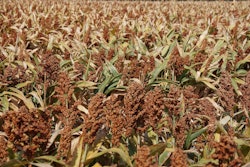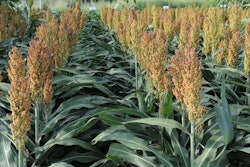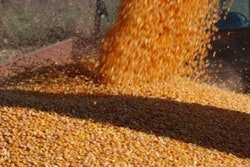
The U.S. Department of Agriculture released its MayWorld Agricultural Supply and Demand Estimates (WASDE)reports on May 12.
In its first projections for the 2022-23 crop year, USDA saysU.S. corn production is expected to drop 4.3%from last year amid a slow start to planting, whilewinter wheat productionin the southern Plains states is at historic lows.
Also noted in the latest report, theRussian invasion of Ukrainemeans nearly 30% of Ukraine's farmland won’t be planted this year.
WHEAT
The outlook for 2022/23 U.S. wheat is for reduced supplies, exports, domestic use stocks and higher prices.
U.S. 2022/23 wheat supplies are projected down 3 percent, as lower beginning stocks more than offset a larger harvest. All wheat production for 2022/23 is projected at 1,729 million bushels, up 83 million from last year, as higher yields more than offset a slight decrease in harvested area.
The all wheat yield, projected at 46.6 bushels per acre, is up 2.3 bushels from last year. The first survey-based forecast for 2022/23 winter wheat production is down 8 percent from last year as lower Hard Red Winter and Soft Red Winter production more than offset an increase in White Wheat production.
Abandonment for Winter Wheat is the highest since 2002 with the highest levels in Texas and Oklahoma. Spring Wheat production for 2022/23 is projected to rebound significantly from last year’s drought-reduced Hard Red Spring and Durum crops primarily on return-to-trend yields.
Total 2022/23 domestic use is projected down 1 percent on lower feed and residual use more than offsetting higher food use. Exports are projected at 775 million bushels, down from revised 2021/22 exports and would be the lowest since 1971/72. Projected 2022/23 ending stocks are 6 percent lower than last year at 619 million bushels, the lowest level in nine years. The projected 2022/23 season-average farm price (SAFP) is a record $10.75 per bushel, up $3.05 from last year’s revised SAFP.
Wheat cash and futures prices are expected to remain sharply elevated through the first part of the marketing year when the largest proportion of U.S. wheat is marketed. The global wheat outlook for 2022/23 is for lower supplies and consumption, increased trade, and lower ending stocks.
Global production is forecast at 774.8 million tons, 4.5 million lower than in 2021/22. Reduced production in Ukraine, Australia, and Morocco is only partly offset by increases in Canada, Russia, and the U.S. Production in Ukraine is forecast at 21.5 million tons in 2022/23, 11.5 million lower than 2021/22 due to the ongoing war. Canada’s production is forecast to rebound to 33.0 million tons in 2022/23, up significantly from last year’s drought-affected crop.
Projected 2022/23 world use is slightly lower at 787.5 million tons, as increases for food use are more than offset by declining feed and residual use. The largest feed and residual use reductions are in China, the European Union, and Australia as well as a sizeable decline in food use in India.
Projected 2022/23 global trade is a record 204.9 million tons, up 5.0 million from last year. Imports are projected to rise on increased exportable supplies from Russia and Canada more than offsetting reductions for Ukraine and Australia. Russia is projected as the leading 2022/23 wheat exporter at 39.0 million tons, followed by the European Union, Australia, Canada, and the United States.
Ukraine’s 2022/23 export forecast is 10.0 million tons, down sharply from last year on reduced production and significant logistical constraints for exports. India is expected to remain a significant wheat exporter in 2022/23. Projected 2022/23 world ending stocks are reduced 5 percent to 267.0 million tons and would be the lowest level in six years. The largest change is for India, where stocks are forecast to decline to 16.4 million tons, a five-year low.
COARSE GRAINS
The 2022/23 U.S. corn outlook is for lower production, domestic use, exports, ending stocks, and higher prices.
The corn crop is projected at 14.5 billion bushels, down 4.3 percent from last year. The corn yield is projected at 177.0 bushels per acre, 4.0 bushels below the weather adjusted trend presented at USDA’s Agricultural Outlook Forum in February.
Thevery slow start to this year’s plantingin the major corn producing states and the likelihood that progress by mid-May will remain well behind normal reduce yield prospects. Despite beginning stocks that are up relative to a year ago, total corn supplies are forecast to decline 2.7 percent to 15.9 billion bushels.
Total U.S. corn use in 2022/23 is forecast to fall 2.5 percent on declines in domestic use and exports. Food, seed, and industrial (FSI) use is virtually unchanged at 6.8 billion bushels. Corn used for ethanol is unchanged relative to a year ago on expectations of flat U.S. motor gasoline consumption.
Sorghum FSI is unchanged but higher than the minimum seen in recent years as China is expected to continue to source sorghum from other exporters in addition to the U.S. Corn feed and residual use is down 4.9 percent relative to a year ago, reflecting a smaller crop, higher expected season-average farm prices received by producers, and a decline in grain consuming animal units.
美国玉米出口预计将下降4.0 percent in 2022/23 as lower supplies and robust domestic demand limit prospects. Even with record exports projected for Argentina and Brazil, a 550-million-bushel drop in exports for Ukraine due to the ongoing conflict is the primary catalyst for a decline in world trade. With expectations of robust global demand in the face of high prices, the U.S. share of global corn trade is up slightly relative to a year ago.
With total U.S. corn supply falling more than use, 2022/23 U.S. ending stocks are down 80 million bushels from last year. Stocks relative to use at 9.3 percent would be below a year ago and lower than the 14.4 percent average seen during 2015/16 to 2019/20. The season-average corn price received by producers is projected at $6.75 per bushel, up 85 cents from a year ago and if realized the highest since $6.89 reached during 2012/13.
The global coarse grain outlook for 2022/23 is for lower production and use, and smaller ending stocks. World corn production is forecast to decline from last year’s record high, mostly reflecting reductions for Ukraine, the United States, the EU, and China that are partially offset by increases for Brazil, Argentina, Serbia, and South Africa. World corn use is expected to decline 1.2 percent, with foreign consumption down 0.9 percent. World corn imports are projected to fall 2.3 percent, with the largest year-over-year declines for China, Canada, the EU, Brazil, and the United Kingdom. Notable increases in corn imports include Vietnam, Iran, and Bangladesh.
Global corn ending stocks are down 1.4 percent to 305.1 million tons, mostly reflecting expected declines for China and the U.S. that are partially offset by increases for Brazil, Serbia, and Ukraine.
For China, total coarse grain imports for 2022/23 are forecast at 37.9 million tons, down 5.0 million from a year ago and below the record 50.5 million reached during 2020/21. China’s internal market prices for energy feedstuffs remain higher than the world market, despite a surge in prices among major exporting countries. Corn imports are expected to decline 5.0 million tons to 18.0 million with a decline in imports from Ukraine. Barley imports are projected at 10.0 million tons and sorghum at 9.5 million.
OILSEEDS
The 2022/23 outlook for U.S. soybeans is for higher supplies, crush, exports, and ending stocks compared with 2021/22.
The soybean crop is projected at 4.64 billion bushels, up 5 percent from last year’s crop mainly on higher harvested area. With slightly lower beginning stocks, soybean supplies are projected at 4.89 billion bushels, up 4 percent from 2021/22. Total U.S. oilseed production for 2022/23 is projected at 136.6 million tons, up 6.1 million from 2021/22 mainly on higher soybean production. Production forecasts are also higher for canola and sunflower seed.
美国大豆粉碎预计2022/232.26 billion bushels, up 40 million from the 2021/22 forecast. Domestic soybean meal disappearance is forecast to increase 2 percent from 2021/22 with low soybean meal prices relative to corn. U.S. soybean meal exports are forecast at 14.4 million short tons, leaving the U.S share of global trade near the prior 5-year average.
With increased supplies, U.S. soybean exports are forecast at 2.2 billion bushels, up 60 million from the revised 2021/22 projection. Despite reduced soybean supplies available for export from South America for the first half of the 2022/23 marketing year, an anticipated record harvest and sharply higher exports beginning in early 2023 is expected to leave the U.S. with a lower share of global trade in 2022/23. U.S. ending stocks for 2022/23 are projected at 310 million bushels, up 75 million
from the revised 2021/22 forecast.
The 2022/23 U.S. season-average soybean price is forecast at $14.40 per bushel compared with $13.25 per bushel in 2021/22. Soybean meal prices are forecast down $20 per short ton from 2021/22 to $400 per short ton and soybean oil prices are forecast down 5 cents to average 70 cents per pound, as oilseed and product supplies rebound in foreign markets.
Global oilseed production for 2022/23 is projected at 647.1 million tons, rising 50.3 million from last marketing year when droughts impacted South American soybean production and the Canadian canola crop.
Global soybean production is forecast up 45.3 million tons to 394.7 million, with Brazil accounting for over half of the increase, up 24 million tons to a record 149 million. Argentina’s soybean crop is expected to reach 51 million tons and Paraguay 10 million.
Partly offsetting higher global soybean and canola production is lower oilseed production for Ukraine.
Global protein meal consumption is expected to grow 3 percent in 2022/23, recovering from slow growth in the past two marketing years. Nearly half of the gains are in China where soybean crush is forecast to increase 6 million tons from 2021/22 to 95 million.
Exportable supplies of oilseed meals and oils are expected to recover, with higher 2022/23 crush for Canada and South America, which offset declines in sunflower products out of Ukraine. Further, palm oil exports are expected to increase for Indonesia after slower-than-normal shipments and export restrictions in the prior marketing year.




















